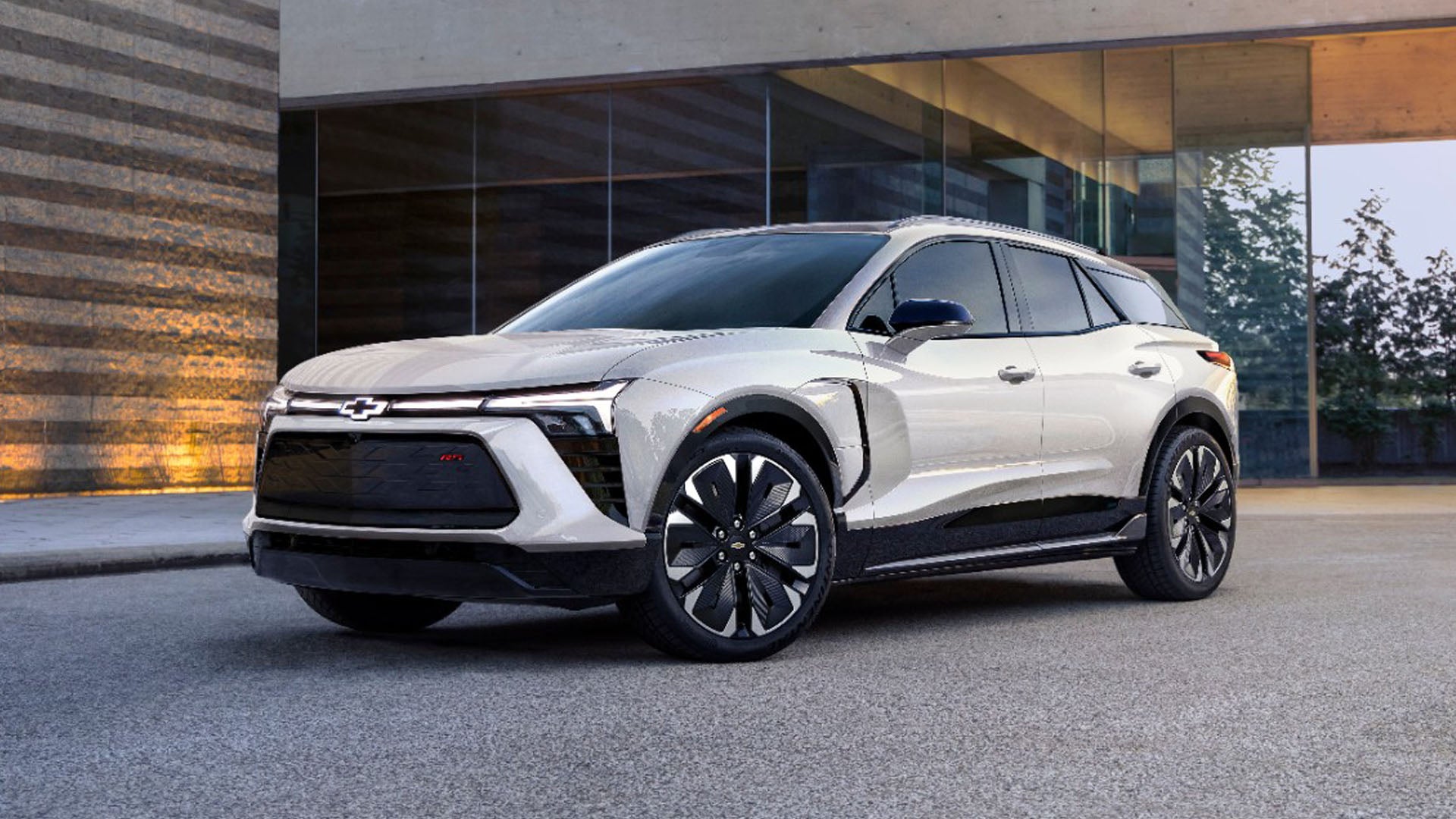The 2024 Chevy Blazer EV has a headline model in the high-powered SS edition. But the RS offers something no other car has: you can have it in front-wheel drive, rear-wheel drive, or all-wheel drive.
With the caveat there might, maybe, have been something else out there over the decades that offered all three options in the same model and generation (The Drive has thought it through and we can't come up with any), it looks like GM and Chevrolet have been the first manufacturers to take advantage of what EV architecture lets you do with configuration.
According to Shad Balch, spokesperson for Chevy, the reason why the new Blazer offers different drivetrain options is simple: Because they can.
"It's a simple answer—the Ultium platform makes it easy to configure more options for customers depending on their needs," he said.
A few EVs swap between their front and rear motors and some hybrids switch between RWD and AWD as they go into and out of full-EV mode. The Polestar 1 switches to purely FWD when it's in combustion-only mode. But obviously, the rest of the powertrain and transmission are still there, just not being used at the time, and the available power will radically differ depending on what mode you're using.
With the Chevy Blazer EV RS, you can pick whatever you want. Enjoy the comforting safety of a front-wheel drive car? Get it. Want the edgier feel of a rear-wheel drive? Oh yes, you got it. Sick of anyone having more power than you? Then tell your dealer you demand all-wheel drive.
Usually, in a combustion car, to switch a car from rear-wheel drive to front-wheel drive would mean changing the whole way the drivetrain is mounted. It'd be possible, in a single model but there'd be some redundancy to the design in the front-wheel-drive version so no one does it because either you're making a performance, rear-wheel-drive car or you're making something for the rest of us average road users.
With an EV you can just pick which motor to use. The front-wheel drive one will probably be less powerful but most EV crossovers are FWD and relatively low on horsies, it's still an Ultium car so it'll be a significant step up from the Bolt. Then you could choose a sort of halfway house and get a sportier-feeling, likely more powerful RWD version or go the whole hog and face the price tag for getting power to both axles.
Motors don't weigh very much, especially compared to batteries, so it's not like taking an engine out and should be easily ballasted for in a car where the center of gravity will be the enormous Ultium power pack, down in the base of the vehicle.
Chevrolet hasn't released details of how the powertrain works but it did note that rear-wheel drive and all-wheel drive configurations are dependent on the size of the battery pack selected. That makes sense since you're not going to make a rear-wheel-drive hoon hatch, when the performance SS exists. The RS might say that it starts at around the same price as the more base models, at $51,995 but expect that to be the front-wheel drive option while the truly sportier versions come in closer to the SS' $65,995 starting tag.
Got a story tip? Mail it in to [email protected]









